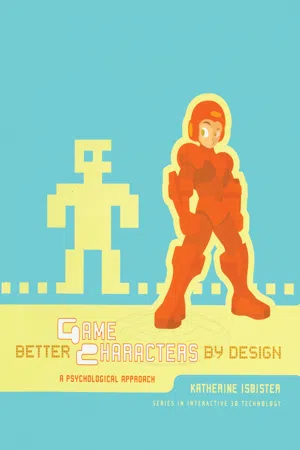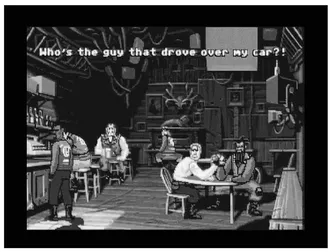
- 368 pages
- English
- ePUB (mobile friendly)
- Available on iOS & Android
About This Book
Games are poised for a major evolution, driven by growth in technical sophistication and audience reach. Characters that create powerful social and emotional connections with players throughout the game-play itself (not just in cut scenes) will be essential to next-generation games. However, the principles of sophisticated character design and interaction are not widely understood within the game development community. Further complicating the situation are powerful gender and cultural issues that can influence perception of characters. Katherine Isbister has spent the last 10 years examining what makes interactions with computer characters useful and engaging to different audiences. This work has revealed that the key to good design is leveraging player psychology: understanding what's memorable, exciting, and useful to a person about real-life social interactions, and applying those insights to character design. Game designers who create great characters often make use of these psychological principles without realizing it. Better Game Characters by Design gives game design professionals and other interactive media designers a framework for understanding how social roles and perceptions affect players' reactions to characters, helping produce stronger designs and better results.
Frequently asked questions
Information
PART Two Focus on the Player
What Is Covered and Why
Who Will Find Part II Most Useful
Overview of Key Concepts
Culture
Expression and Physical Characteristics

Roles and Expectations

Media Contexts and Their Impact on Expectations

Gender
Nature versus Nurture: Biology and Gender
Play Styles

Roles for Girls
Reactions to Girls

Take-Aways from Part II
Chapter Three Culture
3.1 What Is Covered and Why
3.2 The Psychological Principles
3.2.1 Culture: Getting Clear on the Concept

Table of contents
- Cover
- Half Title
- Series
- Title
- Copyright
- Dedication
- About the Author
- Contents
- Foreword
- Preface
- About the DVD-ROM
- I First Impressions
- II Focus on the Player
- III Using a Character's Social Equipment
- IV Characters in Action
- V Putting It All Together
- Appendix: Summaries of Games Discussed
- Index